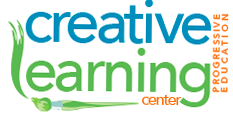What’s the buzz about block building?
Walking into one of our preschool or primary classes, you will notice a large number and variety of hardwood unit blocks available as well as large spaces designed for block building activities. As early childhood educators, we know from the most current brain research how essential blocks are to the overall development and future success of our young students. We recognize that young students learn best by making their own discoveries and through their interactions with classmates in a supportive learning environment. Blocks are an excellent open-ended and flexible material that support children’s cognitive, physical, social, and emotional development.
In our primary class, the children have been studying ancient Egypt and they decide to work together to build a pyramid. Jason has an idea of how to get started and shares it with his classmates. David, Chloe, and Mark add their ideas, insisting on ramps as necessary components. “We need a secret passageway!” exclaims Mark. The group begins building, all the while communicating their thoughts with each other. They are moving around the block center, adding and subtracting blocks.They notice which blocks make the structure balance and start using patterns to create a symmetrical structure. The teacher asks the children thought-provoking questions to stimulate critical thinking, such as “What will happen if you put that block on top?” Susi joins the group and decides that they need signs for the pyramid they have created. Two children go to the writing center and use “inventive” spelling to create these signs. “Pirmd” stands for “pyramid,” while another child writes, “We are making Egypt.” The children are starting to build up the sides when suddenly the building collapses. A big sigh is heard from the group, but not for long. David states rather emphatically, “Our foundation just wasn’t sturdy enough.” They immediately start rebuilding the structure. They continued working on their building for another thirty minutes.
During this block building activity, all the children were extremely focused and demonstrated strong connections to the content they were learning in class. Planning their structure and working through the challenges involved critical thinking skills. They were using math skills in their patterning, symmetry, and recognizing how the different geometric shapes worked together in their structure. Science concepts included a study of balance, gravity, and ramps. Strong language and literacy skills were evident as the children communicated their ideas and used writing skills to make signs for their building. In the area of social-emotional development, the children were cooperating with each other, listening and respecting others’ ideas, and demonstrating resilience when they began rebuilding their project after it fell.
What do you notice your child learning when she or he works with blocks?

